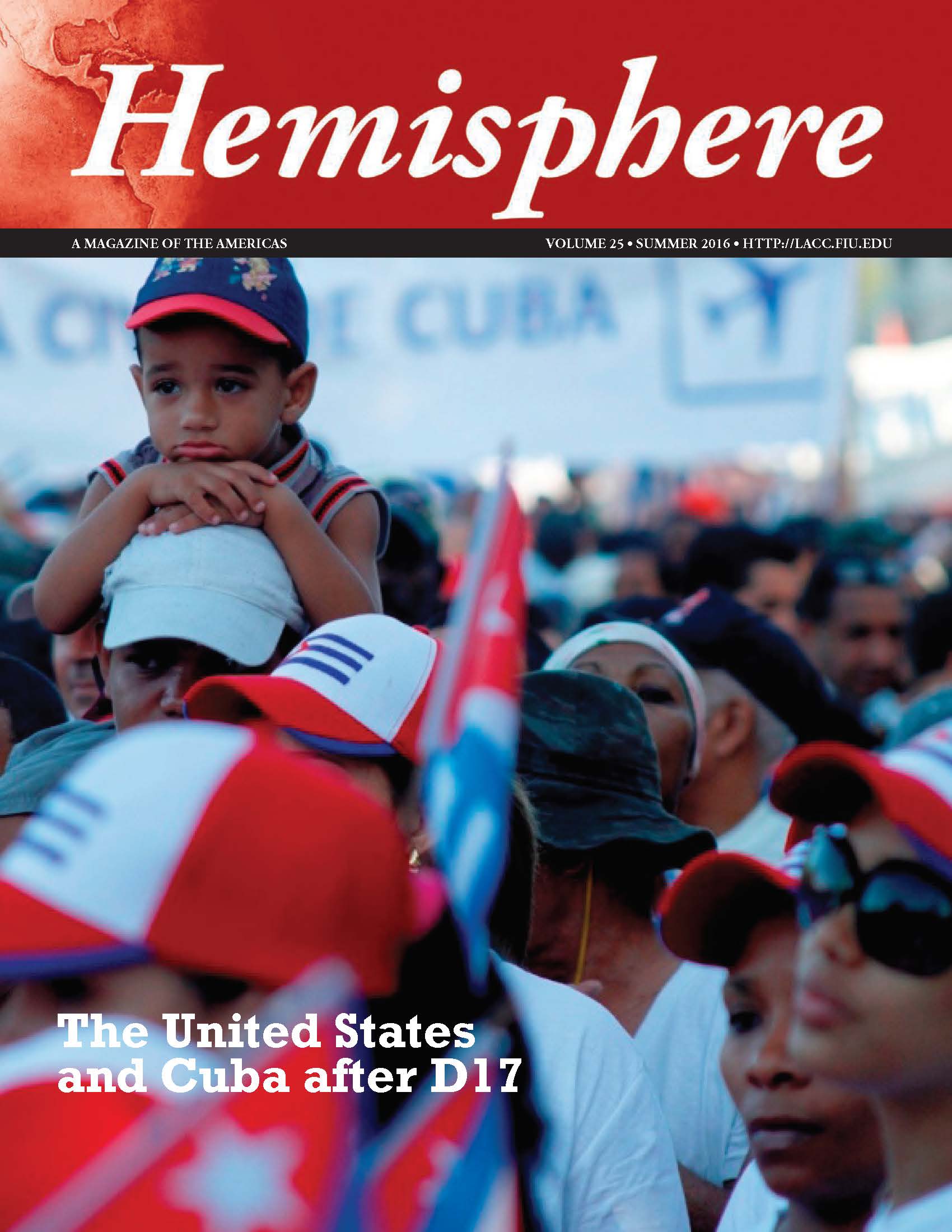
The flagship publication of FIU's Kimberly Green Latin American and Caribbean Center, Hemisphere, features articles from academics around the world who study Latin America and the Caribbean. Issues revolve around a central topic of contemporary relevance in the Americas, with an emphasis in the social sciences. +More Info
The summer 2016 issue (Volume 25) of Hemisphere examines the impact of the restoration of diplomatic ties between the United States and Cuba. Among other questions, the issue addresses the remaining obstacles to a full "normalization" of relations between Cuba and the United States, the economic opportunities created by the eventual lifting of the U.S. embargo of Cuba, and the role of the diaspora in the future of the Cuban nation. Edited by Dr. Jorge Duany, the volume includes the following contributions by experts on Cuban affairs:
- "U.S.-Cuba Economic Relations: Opportunities and Challenges," by Carmelo Mesa-Lago
- "New Policies, Old Politics: Change and Changelessness in U.S.-Cuba Relations," by Louis A. Pérez, Jr.
- "Diplomatic Normality and Its Enemies," by Rafael Rojas
- "U.S.-Cuba Relations: Waiting for Real Changes," by Nora Gámez Torres
- "The Cuban-American Community after D17," by Jorge Duany
- "Cuba's Communist State Is Now a Client of Its Capitalist Entrepreneurs," by Tim Padgett
- "Gelato and a Balmy Evening Ride in an American Convertible: To Be or Not to Be in the New Cuba," by Ruth Behar
- "Cuban Nationalism and the Future of U.S.-Cuba Relations," by Michael Parmly
- "Cuba and the 2016 Presidential Elections," by Dario Moreno and Maria Ilcheva
- "Canada's Island in the Sun? The Impact of D17 on Canada," by Catherine Krull
- "Photo Essay: Cuba after D17," by Orlando Luis Pardo Lazo
The entire volume can be viewed here.
Volume 17 (2006), edited by former CRI Director, Damián J. Fernández, was devoted to "The New Old Cuba." This issue challenges the traditional perspective that Cuba is frozen in time, and examines how a new Cuba emerged following the collapse of the Soviet Union, fifteen years of the Special Period, and significant demographic changes. This new Cuba became even clearer with the transfer of power to Raúl Castro.
The issue contains the following articles and essays:
- "The New Old Cuba," by Damián J. Fernández
- "Change from Below," by Katrin Hansing
- "The New Politics of Opposition," by Orlando Gutiérrez-Boronat
- "Cuba and China," by Daniel P. Erikson and Adam Minson
- "Young Blood," by Frank Mora
- "Poverty and Inequality in Cuba," by Lorena G. Barberia
- "Cuba's New Daddy," by Javier Corrales
- "The End of Rationing," by Carmelo Mesa-Lago
- "Everything Old Is New Again," by Uva de Aragón
- "Plus ça change...," by Anthony P. Maingot
- "Cuba's New Society," by Marian Goslinga
Volume 17 of Hemisphere can be viewed here.